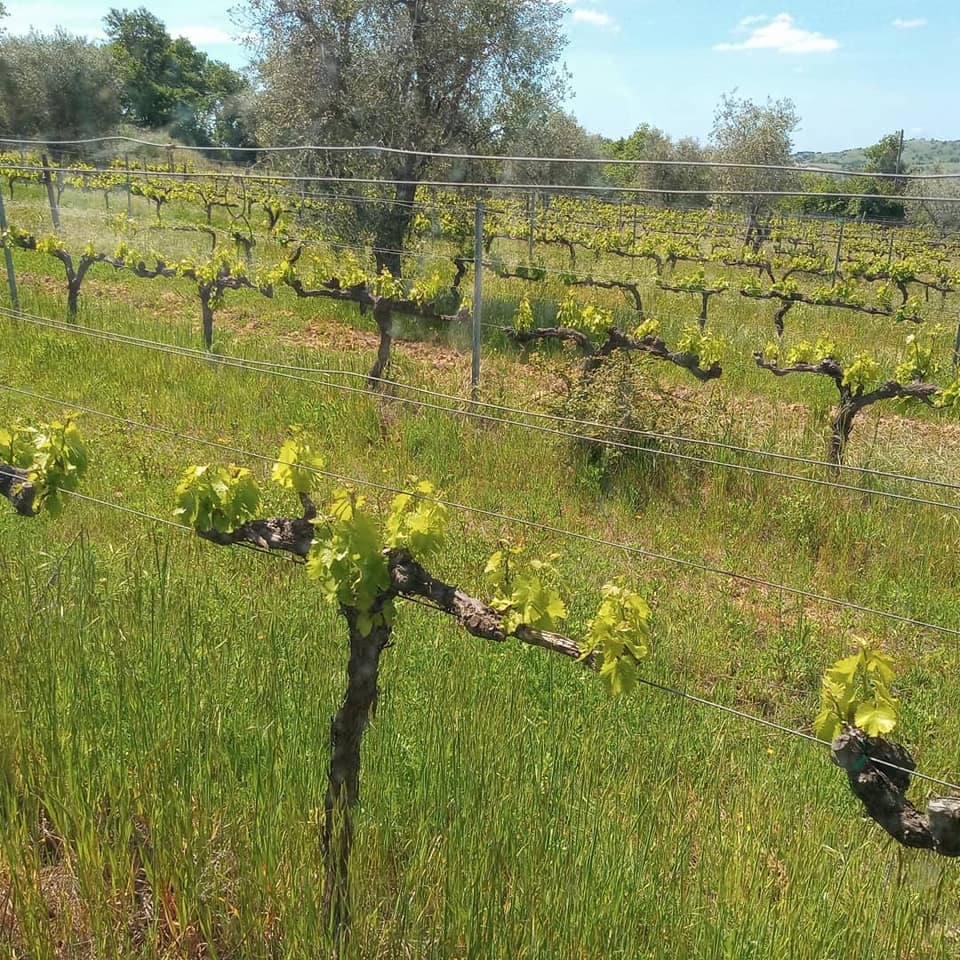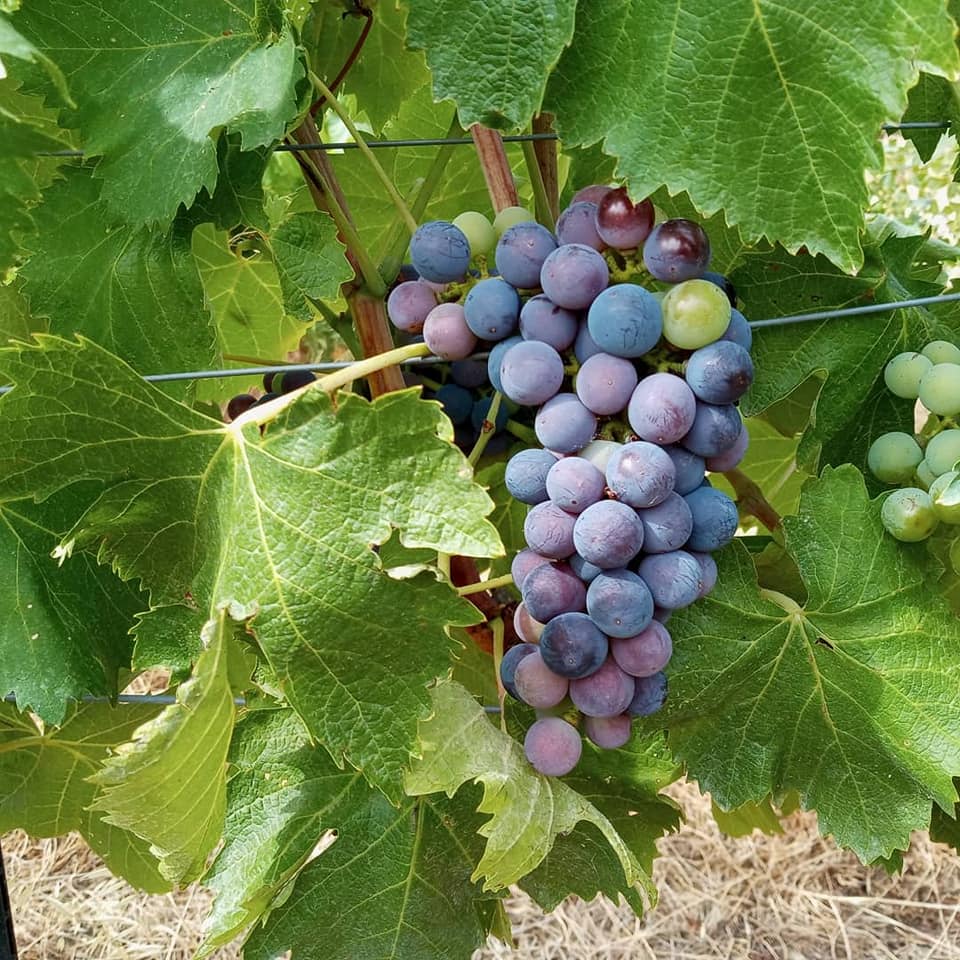
What vineyard work goes on throughout the year?
 There are many tasks that need to be done in our vineyard throughout the year to ensure healthy vines and a bountiful harvest, thus giving us the chance to make incredible wine. Here is an overview of the typical vineyard work in the Tenuta Le Mandorlaie vineyard, by season:
There are many tasks that need to be done in our vineyard throughout the year to ensure healthy vines and a bountiful harvest, thus giving us the chance to make incredible wine. Here is an overview of the typical vineyard work in the Tenuta Le Mandorlaie vineyard, by season:
Spring Vineyard work
Spring is a crucial time in our vineyard as it sets the stage for the growing season ahead. Here are some of the typical tasks that we as vineyard owners and workers undertake during the spring season:
- Pruning: This is the process of removing unwanted shoots and canes from the vines to encourage new growth and maintain the shape of the vine. Pruning is usually done in the late winter or early spring, before the buds begin to swell.
- Soil maintenance: After the winter, the soil in the vineyard was historically tilled and plowed to prepare for the upcoming growing season. This helps to improve the soil structure and allows for better absorption of water and nutrients, these days we tend to use discs to free up the soil without destroying the grasses and top layers of soil in order to keep carbon locked in.
- Trellis maintenance: The trellis system is checked and repaired as needed to ensure that the vines are supported and properly trained.
- Weed control: Weeds are removed from the vineyard to prevent competition with the vines for nutrients and water.
- Fertilization: The vines may be fertilized in the spring to provide the nutrients they need for healthy growth, we use fertilizers, as well as ground cover crops that leave the required nutrients stored in the soil.
- Bud break management: As the weather warms up, the buds on the vines begin to swell and burst open. Vineyard workers may need to manage the timing and rate of bud break to prevent frost damage or disease.
- Disease and pest management: Spring is a critical time for preventing and managing diseases and pests in the vineyard. We may use the ally certified and approved treatments to protect the vines.
Overall, the spring season is a busy time in our vineyard, as we prepare the vines for the growing season ahead. By taking the necessary steps to care for the vines in the spring, we can set the stage for a successful harvest later in the year.
Summer Vineyard work
Summer is a most critical time in our vineyard as our vines are growing rapidly and require careful management to ensure a healthy crop. Here are some of the typical tasks that we undertake during the summer season:
- Canopy management: This involves removing excess leaves and shoots to regulate the amount of sunlight and air that reaches the grapes. Canopy management is crucial for ensuring even ripening of the grapes and preventing disease.
- Irrigation: Vines require regular watering during dry periods to prevent water stress and ensure healthy growth. Irrigation is usually done early in the morning or late in the evening to minimize water loss through evaporation. It is important to monitor the water content of the soil, and only water when required, water is a precious commodity.
- Crop thinning: Removing excess fruit, also known as crop thinning, is a common practice in the vineyard to ensure that the remaining grapes receive the nutrients they need to ripen fully. Crop thinning also helps to improve the quality of the grapes and prevent disease.
- Pest and disease control: Summer is a critical time for managing pests and diseases in the vineyard. We may use preventative sprays or other treatments to protect the vines. As an farm, we are monitored for the use of, and quantity used of the approved compounds available to us.
- Vineyard floor management: The vineyard floor is often mowed or cultivated in the summer to control weeds and improve air circulation around the vines.
- Harvest preparation: As the grapes begin to ripen, vineyard owners and workers may start to prepare for the upcoming harvest. This may involve testing the sugar levels in the grapes, organizing harvest teams, and ensuring that all equipment is in working order.
Overall, summer is a busy time in our vineyard as we manage the rapid growth of the vines and prepare for the upcoming harvest. By taking the necessary steps to care for the vines in the summer we can also take steps to set the stage for a successful harvest.
 Autumn vineyard work
Autumn vineyard work
Autumn is the time of year when grapes begin to ripen and we must work hard to ensure a successful harvest. Here are some of the typical tasks that are done in our vineyard during autumn:
- Harvesting: The most critical task of the autumn season is harvesting the grapes. Harvesting usually takes place between September and October, depending on the climatic conditions and the readiness of the grapes. We carefully handpick the grapes to harvest the fruit.
- Sorting and crushing: Once the grapes are harvested, they must be sorted to remove any leaves, stems, or other debris. The grapes are then crushed or pressed to extract the juice, which will be used to make wine.
- Fermentation: After crushing, the grape juice is fermented using yeast to convert the sugars into alcohol. This process takes several weeks and requires careful monitoring to ensure that the wine develops the desired flavors and aromas.
- Aging: After fermentation, the wine is usually aged in barrels or tanks to allow the flavors to mature and develop further, we may monitor the wine regularly and take steps to ensure that it ages properly.
- Vineyard maintenance: During the autumn season, we may also perform routine maintenance tasks, such as pruning and soil management, to further prepare the vines for the next growing season.
Overall, autumn is a busy and very exciting time in the vineyard of Tenuta Le Mandorlaie as we harvest the fruits of our labor and begin the process of making our wine. By taking the required steps when caring for the vines we hope to ensure a good harvest, we hope to produce high-quality wine that reflects the unique terroir of our vineyard in Maremma, Tuscany.
 Winter vineyard work
Winter vineyard work
Winter is a relatively quiet time in our vineyard as the vines go dormant and the grapevines are resting after the previous year’s growing season. However, there are still some important tasks that we undertake during the winter months to prepare for the next growing season. Here are some typical winter vineyard tasks:
- Pruning: Winter is an ideal time for pruning grapevines, as the leaves have fallen, and the vines are dormant. Pruning is crucial for managing the size and shape of the vines and encouraging healthy growth in the spring.
- Cover crops: To improve soil health and fertility, many vineyard owners plant cover crops in the winter. Cover crops help prevent erosion, add nutrients to the soil, and provide habitat for beneficial insects.
- Irrigation: In some regions, winter can be a dry season, and vineyard owners may need to irrigate their vines to ensure that they remain healthy and hydrated.
- Vineyard maintenance: Winter is an ideal time for general vineyard maintenance tasks, such as repairing trellises, removing dead vines or branches, and checking for pest or disease damage.
- Planning for the next growing season: Winter is also an ideal time to plan for the upcoming growing season, including selecting grape varieties to plant, preparing budgets, and ordering supplies and equipment.
Overall, proper vineyard management is critical for producing high-quality grapes that make great wine. By taking the necessary steps to care for the vines throughout the year, we can ensure the health of our vines and produce a successful harvest.
 Enjoy the wine we produce
Enjoy the wine we produce
If you are looking to enjoy the taste of Maremma, Tuscany in a full bodied red wine, then why not pick up a bottle of two of our full bodied, berry flavoured, well rounded wine.
Our Capricci IGT Rosso Toscana, aged for 12 months in vats, 6 months in french oak barrels and three months in the bottle, we think you will enjoy it
Shop now in our secure online store

 Autumn vineyard work
Autumn vineyard work
 Enjoy the wine we produce
Enjoy the wine we produce